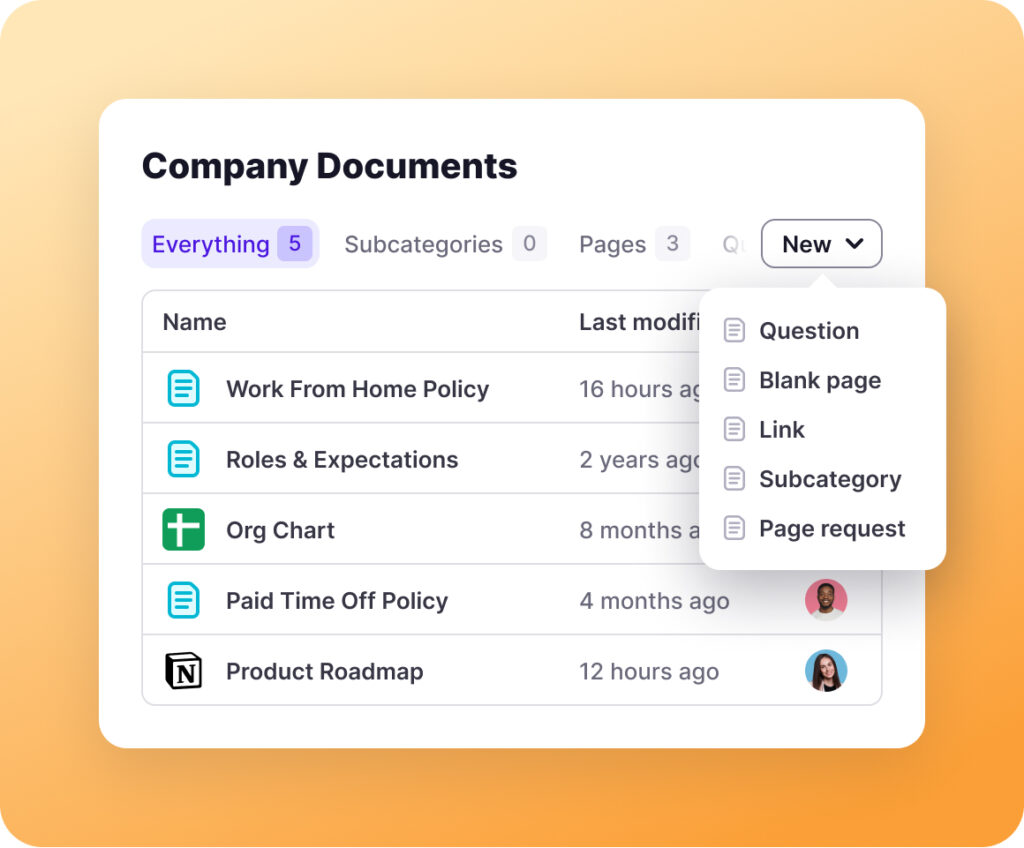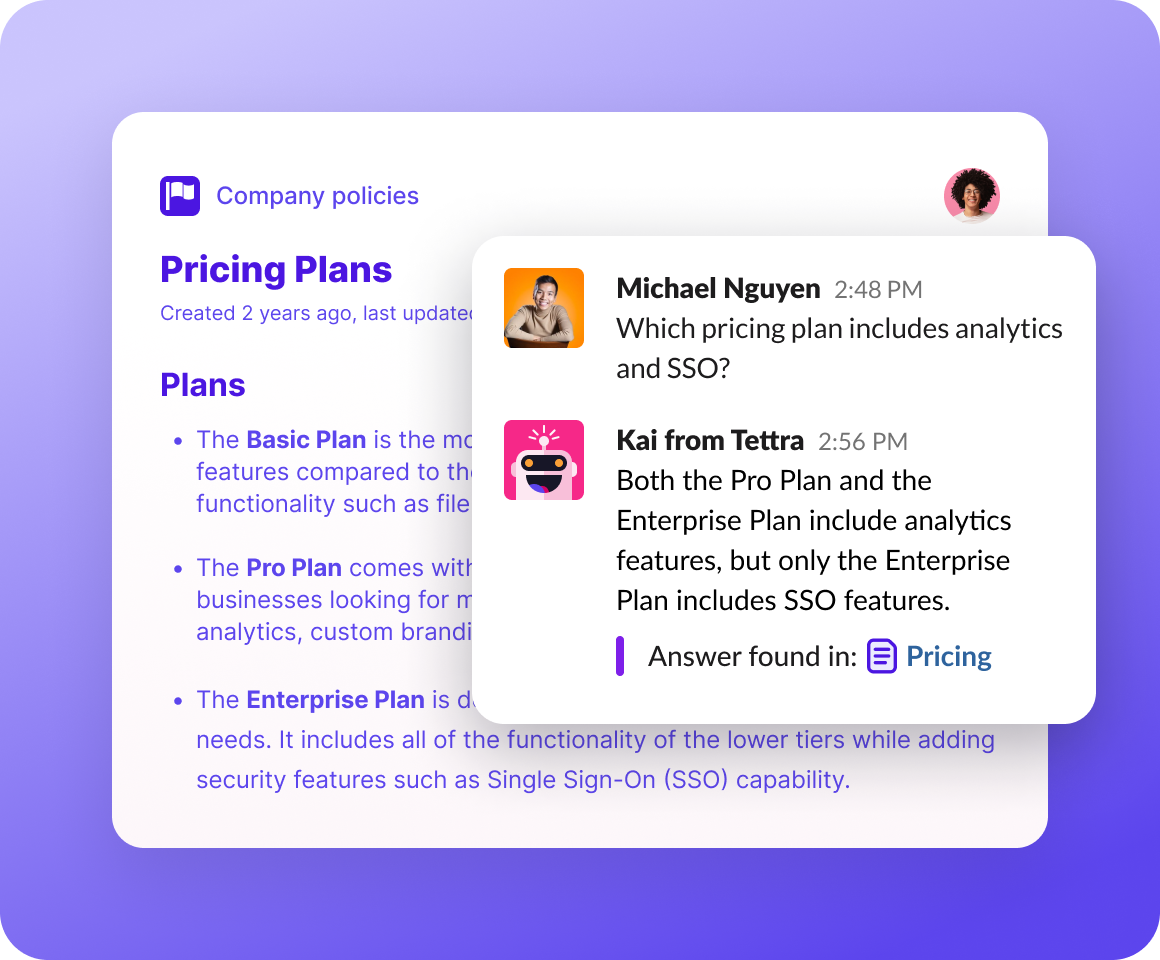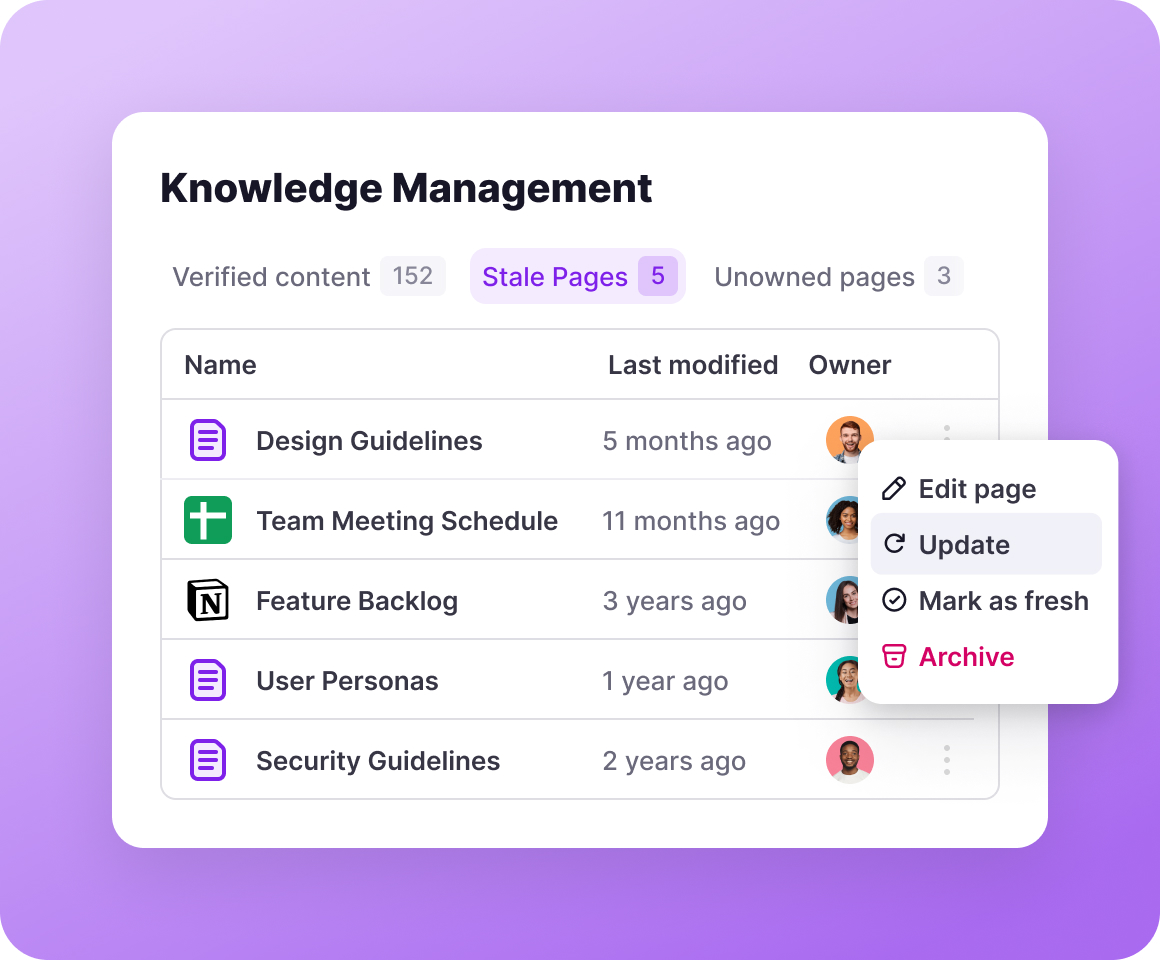Knowledge Management System Software
Get knowledge management workflows to help you document, keep content it up-to-date, and prune stale content. Use Tettra’s AI assistant to generate content and answer questions, instantly.
Free 30-day trial for all AI features

How It Works in Tettra

Content your team can trust
Not knowing if a knowledge base article is accurate is frustrating. Tettra’s Verification ensures experts review your content on a set schedule.
Schedule your demo

Identify & fill knowledge gaps
Missing content makes your knowledge base less effective. With Tettra, teammates can request new pages at any time. Additionally, Kai will auto-generate questions and answers from your existing content.

Trusted by thousands of companies around the world















